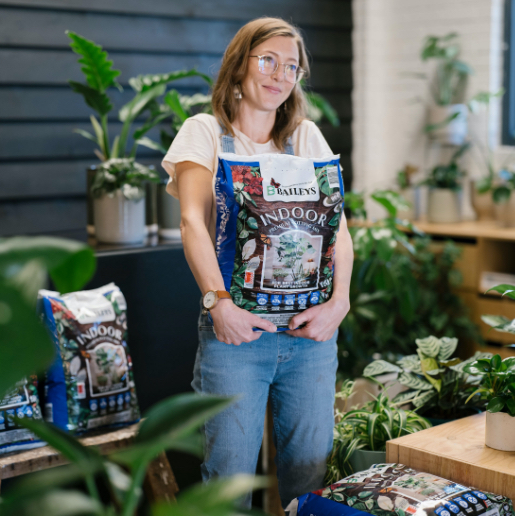
Join our Great Gardens Club!
Sign up to enjoy 15% off your first purchase from Baileys online. Plus, get our monthly WA gardening tips, latest news and promotions straight to your inbox.

Sign up to enjoy 15% off your first purchase from Baileys online. Plus, get our monthly WA gardening tips, latest news and promotions straight to your inbox.
Creating a Bee-Friendly Garden
It's good to have bees in the garden from two perspectives, yours and theirs. They pollinate the fruits and vegetables that we grow at home and if there is an abundance of bees in your garden you will notice that productivity increases rapidly.
Bees are under survival pressure from pesticides and habitat destruction together with declining biodiversity. Home gardens can really make a solid contribution to bee health and survival. You don't need a hive in your garden to play a part in bee survival as these tireless creatures can travel up to 5 kilometres to source suitable food.
How to make your garden more bee-friendly
1. Diversity is king! A broad suite of plants of different shapes, heights, and of course flower types is crucial over as big an area as possible (including your verge). This will give you the best chance of accommodating a healthy bee population.
2. Stretch that flowering song! Your garden should be a symphony of flowers and an ongoing chorus of flowering times. Remember that bees (just like us) will need to feed ALL year.
3. Wonderful water - as with food, bees need water too. Try and have a range of water points and ideally some shallow flat bowls (helps with the technicalities of take-off and landing!) and don't forget to add some rocks or sticks to help them climb out easily.
4. Shade glorious shade - again there isn't a creature on the planet that really likes the brutal and unadulterated Perth summer sun so some small (or big) shade trees will be great to cast some dappled shade over the hives.
5. Plastic not so fantastic! There is no place for artificial lawn in a bee-friendly garden. It will get outrageously hot, it doesn't support flowers and it will off-gas toxic gases, which are really bad for bees (let alone humans).
6. Wonderful windbreaks - try and establish a small windbreak across the prevailing path of wind on your property boundary (that is usually on the east and perhaps the southwest boundaries). This will not only help prevent old bees getting buffeted but it can block spray drift from neighbours and Council workers
7. Forget the chemicals! It is pretty clear now that chemicals and healthy bee populations don't mix! So ship your unwanted nasties off to the hazardous waste section of your local tip and give nature a chance to recover. The good news is there are lots of good, low or no toxicity alternatives on the market so check them out.
Plants loved by Australian Bees
Herbs: Basil, borage, catmint, chives, comfrey, coriander, fennel, lavender, lemon balm, marjoram, mint, mustard, oregano, parsley, rocket, rosemary, sage, savoury and thyme.
Fruit: Apple, apricot, avocado, blackberry, black and red currants, blueberry, lemons, lime, mandarin, mango, passionfruit, persimmon, plum and strawberries
Vegies: Artichoke, capsicum, chilli, cucumbers, leeks and onions (if left to go to flower), pumpkins and squash.
Flowers: Alyssum, cornflower, cosmos, echinacea, echium, forget-me-not, foxglove, geranium, marigold, phacelia, portulaca, nasturtium, roses, sunflowers and zinnia.
Australian natives: Acacia, banksia, bracteantha, callistemon, dianella, eremophila, eucalypts, grevilleas, hakea, hardenbergia, hibbertia, leptospermum, melaleuca and xanthorrhoea (grass tree).
Others: Dahlia, dombeya (Natal wedding bush), gazania and phyla (lippia)